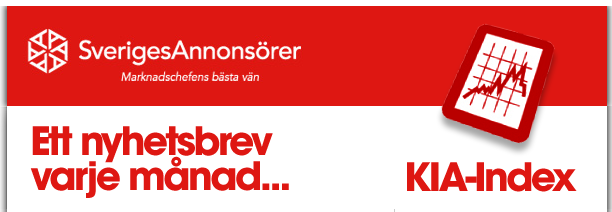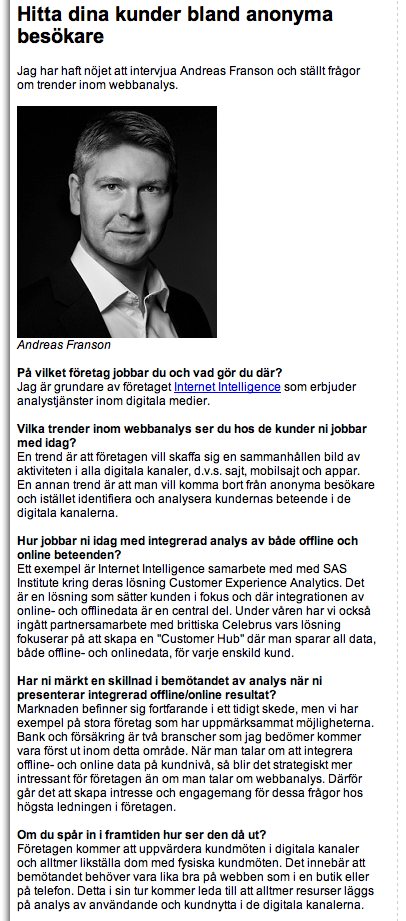Below is an interview in Swedish Advertisers (Sveriges Annonsörers) newsletter on Analytics. It is about trends within web analytics focusing on customer data and integration between online- and offline data. First a translated version and below that the original version in Swedish:
What company do you work for and what do you do for them?
I am the founder of Internet Intelligence who offers consultancy services in digital analytics.
Which trends do you see within web analytics at the customers you work for today?
One trend is that the companies wants a single picture of all activity in all digital channels; web site, mobile site and apps. Another trend is that companies wants to get away from anonymous visitors and instead identify and analyze customers behavior in the digital channels.
How do you work with integrating offline- and online behavior today?
One example is Internet Intelligences’ cooperation with SAS Institute regarding their solution Customer Experience Analytics. It is a solution that focuses on the customer and where the integration of online- and offline data is a central part. During the spring we have also entered a partnership with the British company Celebrus, who’s solution focuses on creating a “Customer Hub”, where you have all data, offline- and online, for each individual customer.
Have you noticed any difference in the interest for analytics when you present integrated offline/online results?
The market is still in a very early stage, but we have examples of big companies that are recognizing the possibilities. Banking and Insurance are two industries that I believe will be first out in this area. When you talk about integrating offline- and online data at a customer level it becomes strategically more interesting compared to when you talk about web analytics. By doing so you can create an interest and engagement among top management in the companies.
What do you see happening in the future?
Companies will upgrade the value of customer meetings in digital channels and consider them equal to physical meetings with customers. This means that the treatment of customers needs to be just as good on the web as in a store or on the phone. This in turn will lead to more resources being allocated to analyzing usage and customer satisfaction in the digital channels.
Original interview:

